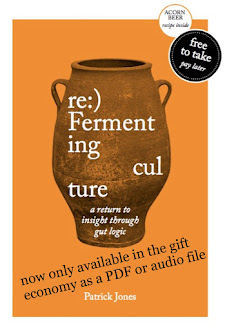Zeph and I joined the Victorian home educators camp at Halls Gap in the Grampians this week. We came with a community friend Gabe and the two boys joined over 100 kids from all over the state (and further afield). For five days we experienced unpredictable weather, night games, wrestling, abseiling, rock climbing, new friend making, swimming, tiredness, ball games, bike-riding, sunburn, boomerang throwing, cuts and bruises and some autonomous food.
 |
| Blow fly grass (Briza maxima) also known as quaking grass |
It is
true spring, one of the six seasons in
Gariwerd, and there is an abundance of edible flowering plants covering the ground. These are the traditional bush plants used by the
original people and the newly naturalised plants that have come since 1788. Many are edible and/or medicinal. One favourite newly naturalised plant at this time of year is wild onion, otherwise known as three-cornered garlic or angled onion because of the triangulate stem shape. We found swathes of them along the path that runs into town and on to the
Brambuk Cultural Centre. Great food for being
on the go.
 |
| Three-cornered garlic (Allium triquetrum) |
The garlic was growing near pockets of Milkmaids, a perennial herb native to woodland forests of southern Australia. The tuberous roots are edible cooked as potato and like yam daisies they are
crisp and starchy eaten raw.
 |
| Milkmaids (Burchardia umbellate) |
Everywhere throughout Gariwerd relationships between traditional bush food species and newly naturalised tucker are apparent. Common resources are shared between species who get along without ideological register or monetary warring.
 |
| Deer (Cervidae family) and Kangaroo (Macropod, meaning 'large foot') |
We visited Brambuk and spoke with the knowledgeable and generous Blake, the chef at the centre's
Bushtucker Cafe. Blake and I shared notes. He introducing me to some of his preferred herbs and spices from nearby and other regions of Australia,
 |
| Round-leaf Mint (Prostanthera rotundifolia), Strawberry Gum (Eucalyptus olida), Wattleseed (Acacia sp) Lemon myrtle (Backhousia citriodora) |
and I demonstrated how to find desirable starch at the base of mat-rush (lomandra) leaves just outside the cafe. Lomandra is also known as basket grass and was used for traditional basket making. The seeds can be ground into a flour meal for cakes. The plant is a good source of vitamin C, iron and fibre.
 |
| Mat-rush (Lomandra longifolia) a common source of starchy food |
At Brambuk we also learned about uses for honey-myrtles. The local people called these plants
Gutyamul. The scientific name is
Melaleuca. The nectar was added to water to make a sweet drink. There are thirteen species of
Melaleuca in Victoria and like all the
Banksia species the flower spikes can be used to make a sweet cordial or a fermented beverage.
 |
| Honey myrtle (Melaleuca sp.) |
We also learned about the traditional uses for grass trees and how the seeds were ground as flour and the stem was used as a fire-stick for the ingenious fire-stick farming that was common to all Aboriginal peoples. The resin was used to bond materials together such as stone spearheads to wooden shafts.
 |
| Grass tree (Xanthorrhoea sp.) |
The walk to Brambuk and back to our camp was around ten kilometres. The sun beat down in the afternoon and we were talking up the need for a swim when we came across what I thought was an enormous bolete mushroom, but my mycologist friend
Alison Pouliot (
who knows the area well) believes it is
Phlebopus marginatus. We placed a dollar coin on the cap of this big pore mushroom to give a sense of the size.
 |
| Phlebopus marginatus |
While at Brambuk we also undertook a boomerang throwing workshop. A second
Gariwerd post will follow on making and throwing a boomerang.
















1 comments:
this is the worst post ever
Post a Comment